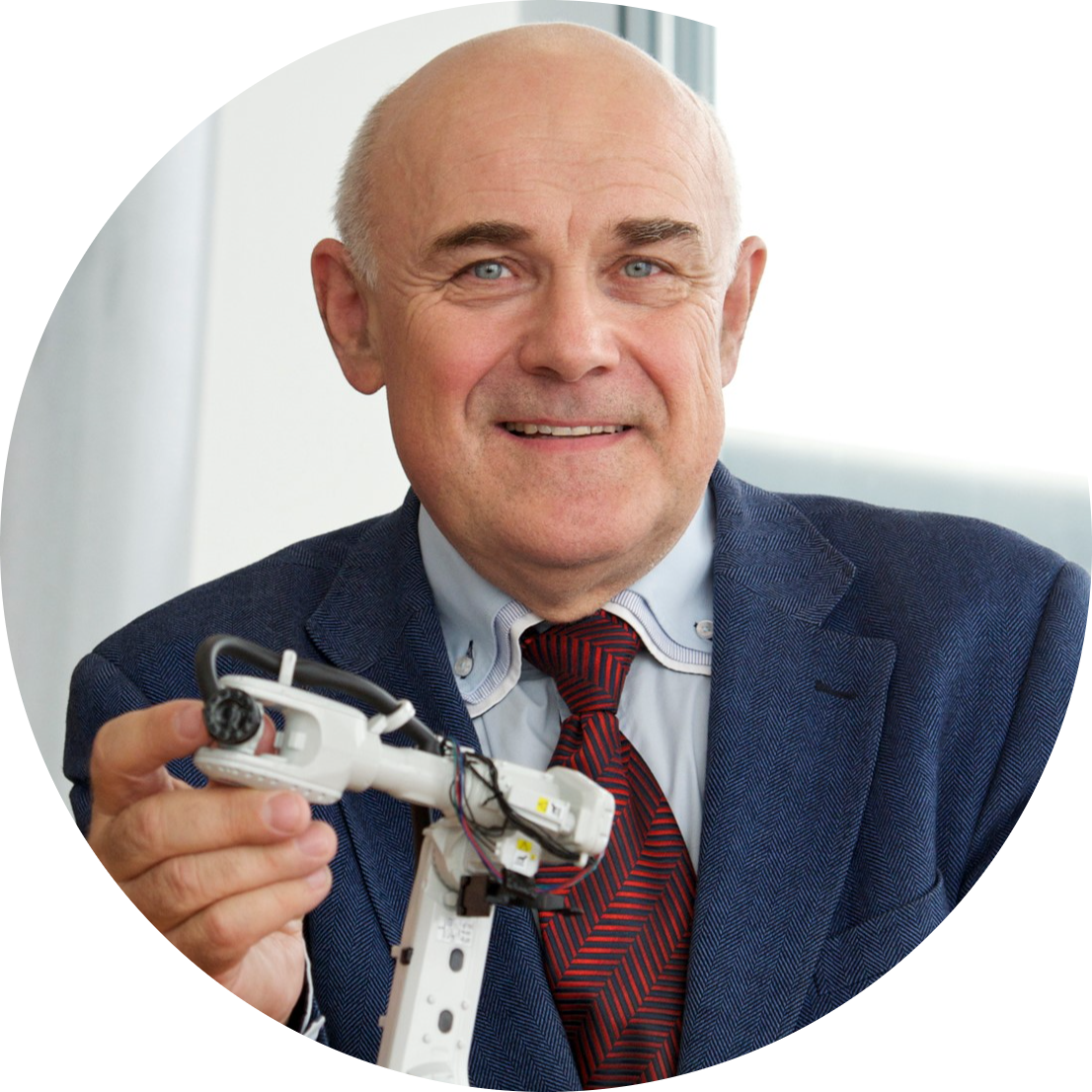Bridging the gap between academic research and industrial needs
With academic research on one side and industrial requirements on the other, we can see even though the needs and objectives of both parties can be similar they do not often meet in time, place, and purpose in the area of research and application of AI solutions. Nonetheless for successful achievements of their goals they usually need each other’s help in terms of data provision, specific skill sets and more. Is there a way to bridge their differences and to foster interactions and feedback between these two parties? Are they even aware of each other’s needs, or do they have different points of view? Is there a suitable platform where they can reach each other? We asked prof. Vladimír Mařík, the scientific director of CIIRC CTU, how he sees the industry academia collaboration in the area of AI in near future.
Q: Which are the topics that could resonate in academia-industry collaboration in applied AI research in the near future specifically in manufacturing, energy and other industrial related areas?
A: Currently, the industry is interested in solutions which are based on single AI-based algorithms, like neural networks or decision trees which are able to solve their partial problems. But, solving much more complicated tasks requires integration of partial algorithms and methods which is based on well-structured ontological knowledge, that means on structural models enabling to understand all or many interdependencies and relations to grasp the problems in full their complexity. The focus of interest in the future decade will converge towards AGI.
Q: In which areas are European Universities well equipped (expertise, equipment,..) and able to foster and support applied research in AI and in which areas do they lack the necessary tools?
A: The Universities do have a lot of theoretical knowledge as well as practical expertise, their equipment is not bad. We can see a lack of real data to solve real problems, as well as a lack of publicly available use cases to speed up the processes of knowledge re-use and building new systems faster and more efficiently. There is a lack of the system integration platforms – this would, of course, require a certain level of standardization.
Q: What needs to be done if anything to support their development? Would the answer be to inject more money into the research?
A: Money is always appreciated, but – I think – quite strong orientation and concentration of research efforts would help a lot.
Q: European AI research is currently very dependent on public funding from the EU funds. Is it possible to involve private capital (not only investment, but also joint venture, or PPP) from industrial companies, consumers, or technology developers?
A: This is really a must. Without involvement of the private capital the AI solutions will remain on the level of academic or semi-industrial prototypes. Private funding is needed to convert the academic results into products, or at least to reasonable trials to do this. And, there is nothing more motivating for the AI researchers than the chance to see products as results of their research.
Q: Does this system already work in some areas? Are there any specific conditions that need to be met for this system to work?
A: I think, the first visible efforts to support AI research are identifiable in the field of industrial manufacturing – the companies try to follow the Industry 4.0 visions and architectures to save money in production. And they are quite ready to co-invest into the research activities. They are providing equipment, building joint research labs with Academia etc. The other areas with private capital involvement include speech communication, virtual and augmented reality – this is usually accompanied by the support of start-up activities. And planning/scheduling in general are deeply required by nearly everybody.
Q: What should researchers be mindful about in case they would like to involve private capital?
A: First of all, they should understand the IPR issues, what is background and foreground knowledge and how to protect their own IP since the very beginning of any kind of cooperation or co-funding.
Q:Finance is only one side of the issue. On the other hand is the information flow of needs and objectives between the two sides – research and industry. Are the needs of each involved party well defined and communicated to the other side?
A: This is one of the key issues to be solved. Quite often one side does not understand the other one. They are simply living and operating in diverse worlds. To find and define quite clear communication rules should be one of the first steps when a new cooperation or industrial funding is starting. And this communication has to be built upon clearly expressed expectations, incl. limits from each of the sides.
Q: Can panEuropean networks such as CLAIRE be an answer to bridging the gap between these two groups?
A: Yes. CLAIRE is expected to do so, this is one of its principal goals. And I am convinced this part of the CLAIRE’s vision will be accomplished. At least we should put a maximum of efforts to solve this crucial issue. I am personally ready to do so.

